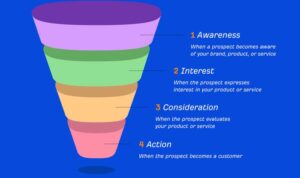Effective Remarketing Techniques sets the stage for this enthralling narrative, offering readers a glimpse into a story that is rich in detail with american high school hip style and brimming with originality from the outset.
Are you ready to dive into the world of remarketing and discover how to boost your business?
Overview of Remarketing Techniques
Remarketing in the context of digital marketing is a strategy used to target users who have previously interacted with your website or mobile app but did not make a purchase or convert. It involves showing relevant ads to these users as they browse the internet, reminding them of your products or services and encouraging them to complete the desired action.
Examples of Platforms for Remarketing
- Google Ads: Google offers a powerful remarketing tool that allows you to show ads to users who have visited your website or used your app across the Google Display Network.
- Facebook Ads: Facebook also provides remarketing options to target users who have engaged with your content on the platform or visited your website.
- LinkedIn Ads: LinkedIn allows for remarketing to professionals who have interacted with your company’s page or website.
Importance of Effective Remarketing Strategies
Effective remarketing strategies are crucial for businesses to stay top-of-mind with potential customers who have shown interest in their products or services. By targeting these users with personalized ads based on their past interactions, businesses can increase conversion rates, drive sales, and ultimately improve their ROI. Implementing effective remarketing techniques can help businesses maximize their marketing efforts and reach a more qualified audience.
Types of Remarketing Techniques

In the world of digital marketing, there are various types of remarketing techniques businesses can utilize to re-engage with potential customers who have shown interest but haven’t converted yet. Let’s explore some of the most effective ones below.
Display Ads, Effective Remarketing Techniques
Display ads are a popular form of remarketing that involves showing ads to users who have previously visited your website or interacted with your brand online. These ads can appear on various websites within the Google Display Network, reminding users about your products or services.
Email Remarketing
Email remarketing involves sending targeted emails to users who have abandoned their carts or browsed specific products on your website. By sending personalized emails with enticing offers or reminders, businesses can effectively bring back these potential customers to complete their purchase.
Social Media Remarketing
Social media remarketing allows businesses to show ads on platforms like Facebook, Instagram, or Twitter to users who have engaged with their brand on social media or visited their website. These ads can be highly targeted based on users’ behavior, interests, and demographics.
Dynamic Remarketing
Dynamic remarketing takes personalized ads to the next level by showing users specific products they viewed on your website. These ads can display the exact products users showed interest in, increasing the chances of conversion by reminding them of items they were considering.
Video Remarketing
Video remarketing involves showing video ads to users who have interacted with your brand online, such as watching a video on your website or YouTube channel. These ads can help reinforce your brand message and keep your business top of mind for potential customers.
Comparison of Effectiveness
Each type of remarketing technique has its strengths and weaknesses, depending on the industry, target audience, and marketing goals. Display ads are great for reaching a broad audience, while email remarketing can be highly personalized and effective for converting leads. Social media remarketing is excellent for engaging users on popular platforms, while dynamic remarketing and video remarketing are powerful tools for showcasing specific products or content.
Real-World Examples
One successful example of email remarketing is Amazon, which sends personalized emails to customers who have abandoned their carts, prompting them to complete their purchase. Another example is Spotify, which uses social media remarketing to show ads to users who have listened to specific genres or artists, encouraging them to upgrade to a premium subscription.
Overall, combining different types of remarketing techniques can create a cohesive and effective strategy to re-engage with potential customers and drive conversions.
Implementing Effective Remarketing Campaigns: Effective Remarketing Techniques

When it comes to creating successful remarketing campaigns, there are several key steps to keep in mind. From setting clear goals to optimizing ad creatives, each aspect plays a crucial role in ensuring the effectiveness of your campaign.
Setting Clear Goals
- Determine your target audience and segment them based on their behavior and interactions with your site.
- Set specific objectives such as increasing conversions, driving website traffic, or boosting brand awareness.
- Establish key performance indicators (KPIs) to measure the success of your campaign.
Personalized Content in Remarketing Campaigns
- Personalization is key in remarketing campaigns as it helps in creating a tailored experience for your audience.
- Use dynamic content to deliver personalized messages based on user behavior and interests.
- Leverage customer data to create relevant content that resonates with your target audience.
Optimizing Ad Creatives for Remarketing
- Create visually appealing ads that catch the attention of your audience.
- A/B test different ad creatives to see which ones perform best with your target audience.
- Include a clear call-to-action (CTA) to encourage users to take the desired action.
Analyzing Remarketing Metrics
When it comes to analyzing remarketing metrics, there are several key indicators that can help you evaluate the performance of your campaigns. By tracking these metrics and interpreting the data effectively, you can refine and improve your remarketing strategies for better results.
Key Metrics to Track
- Click-Through Rate (CTR): This metric shows the percentage of users who clicked on your ad after seeing it. A high CTR indicates that your ad is relevant and engaging to your target audience.
- Conversion Rate: This metric measures the percentage of users who completed a desired action, such as making a purchase or signing up for a newsletter, after clicking on your ad. A high conversion rate signifies that your remarketing efforts are driving valuable actions.
- Return on Ad Spend (ROAS): ROAS calculates the revenue generated from your ads compared to the cost of running those ads. It helps you understand the profitability of your remarketing campaigns.
- Cost per Acquisition (CPA): CPA shows how much it costs you to acquire a customer through your remarketing efforts. Lower CPA indicates more efficient campaign performance.
Interpreting Data
- Look for trends and patterns in the data to identify what is working well and what needs improvement in your remarketing campaigns.
- Compare the performance of different ad creatives, audience segments, and messaging to understand which elements resonate best with your target audience.
- Monitor the performance of your campaigns over time to see how changes you make impact key metrics and adjust your strategies accordingly.
Using Data Analytics for Refinement
- Utilize data analytics tools to gain deeper insights into user behavior, preferences, and interactions with your ads.
- Segment your audience based on their engagement levels, purchase history, or other relevant factors to personalize your remarketing campaigns for better results.
- A/B test different ad variations and targeting strategies to optimize your campaigns based on data-driven decisions rather than assumptions.





